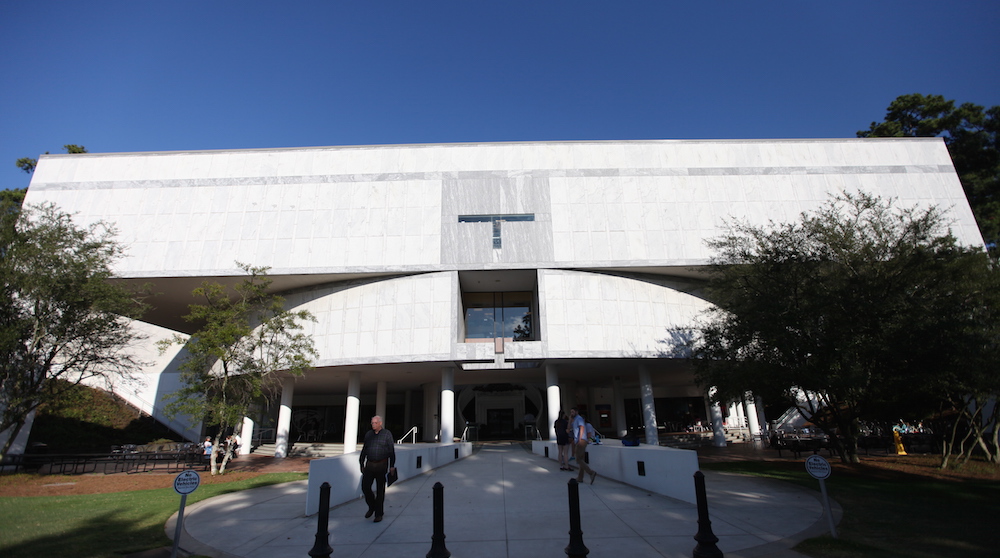Still early in the process of renovating and replacing the Dobbs University Center (DUC), the University spent the past year directing a feasibility study, a document that represents stakeholder interests and helps inform future decisions, of the new center, according to Vice President for Campus Services Matthew Early.
The study, conducted by firm Perkins + Will, issued recommendations ranging from demolishing the west portion of the DUC, which currently contains Dobbs Market, Eagle’s Landing and Mail Services, and renovating the historic east DUC to adding more retail food options and creating an approximately 1,600-person sized event space.
The recommendations and figures in the feasibility study, which is done for every new University project, will not necessarily be implemented, but the study is meant to provide parameters and identify needs for the new center, according to Early.
The feasibility study estimated a total project cost of $98 million, but that cost could change throughout the design and construction processes.
“Moving forward, money has not been identified for it yet,” Early said. “We’re just looking at, what are our possibilities? We’re trying to come down for what is best.”
However, he added that the cost would likely be lower.
“The way we translated [the cost forecast] … I know we can do it for less,” Early said.
A timeline for the project could also vary, depending on factors such as the U.S. economy and logistical problems, Early said.
“Our goal is to have a general idea of what a facility will look like … probably around April or May,” he said. “Then, there is no timeline. It could take years.”
The feasibility study projected a potential opening for the new center in spring 2019.
During the past year, the feasibility study met with more than 200 people, including more than 100 students, to collect community feedback and suggestions, according to DUC Director Ben Perlman. The study found that the current DUC has a number of mechanical and electrical inefficiencies, lacks accessibility for people with disabilities in some areas and is difficult to navigate.
The study recommends demolishing the west DUC, built in the mid-1980s, because community members felt it functions poorly and is aesthetically incongruent.
“The anticipated cost savings for re-using the structure was only [1.5] to 2 [percent] of the overall forecasted construction cost,” the study states. “As a result, it is determined that the best approach for the future DUC is to gut and renovate the ‘East DUC’ and demolish the 1982 addition to replace it with a more efficient, welcoming and architecturally attractive University Center.”
According to University Architect Jen Fabrick, who helps manage the project for Emory, people respect the east DUC for its history and aesthetics, unlike the west side.
“We looked, internally, to see if it made sense to renovate or add on to [the West DUC],” she said. “It would cost so much to renovate or change the building, so it probably makes more sense to demolish it.”
The study also recommended moving the center’s loading dock to a place more accessible for food services, keeping Theater Emory housed in the center and adding a multipurpose event space that could seat a class of students, or 1,600 people.
“Currently, we lack a very large meeting space,” Early said. “What if there’s a torrential downpour during Commencement? At the end of the day, we don’t have one large commencement space … A lot of student groups actually rent space outside of Emory because we lack that kind of space.”
The study also envisioned glass on the exterior of the center and more transparency and light inside, which Fabrick said could help develop Emory’s community.
“There’s a big school of thought … that you develop community by seeing activity,” she said. “You feel a part of it, even if you aren’t a participating, if you can see it.”
Fabrick referenced the new freshmen dorms such as Raoul residence hall as potential examples.
“We’ve designed them to have more transparency … to have a sense of dynamic energy,” she said.
Additionally, the study emphasized Emory’s commitment to sustainability as a driving factor in the new center’s design. Fabrick said that Emory is asking architects to take ideas of sustainability “above and beyond.”
“We want to encourage, broaden the students’ experience of sustainability,” Fabrick said. “We want people to see it, feel it, touch it.”
Currently, five architect firms are short-listed for submitting proposals, and each is being assessed on past experience building student unions, ability to come in on schedule and under budget, individual team members, ideas for a temporary facility and more, according to Early. Once the firms are rated by the University, the overall successful bidder will be attached to the project.
Once the money for the project is identified, approval for designing the new project would move forward in stages, going through the University’s Ways and Means Committee, which includes senior leadership, who would then recommend it to the Finance Committee of the Board of Trustees, according to Early. After the design phase, where talks with suppliers and subcontractors would begin, the budget number would become more refined, and the project would move to the construction phase after the same approval process.
Perlman said the student center should be more welcoming to different types of students and act as the “living room” of the University.
“The goal of a university center should be to be a college union and engage with students, faculty and staff,” he said. “We’re not really engaging as well as we could be with some of these populations … Our space is not necessarily designed to foster collaboration between student groups and the rest of the community.”
College freshman Olubusola Osunsanya, one of the students involved in the project’s advisory board, said she and others are supposed to be “the advocates for the students” in envisioning the new center.
“We’re trying to find a place where students can call home and congregate,” she said. “When I walk into the DUC [currently], I don’t say, ‘this is my second home.’”
For Early, patience is key right now.
“There’s no timeline, and there’s nothing happening yet,” he said. “Be patient with us, but when we have [more information], we will let you know the minute we get it.”
Fabrick echoed that sentiment but noted the widespread interest and passion for the project that she’s seen from the community.
“We’re very early in the development in the project right now, but the enthusiasm has been incredible,” she said. “It tells me that it’s needed. It’s something Emory lacks that we need … So we’ll work hard at it!”
— By Sonam Vashi, Executive Editor
Sonam Vashi (15C) is a freelance journalist in Atlanta who’s written for CNN, The Washington Post, Atlanta magazine, and more.






